1ST SLOVENIAN “HERNIA INTERNATIONAL” EXPEDITION – GAMBIA 2016
(22nd – 29th October 2016)
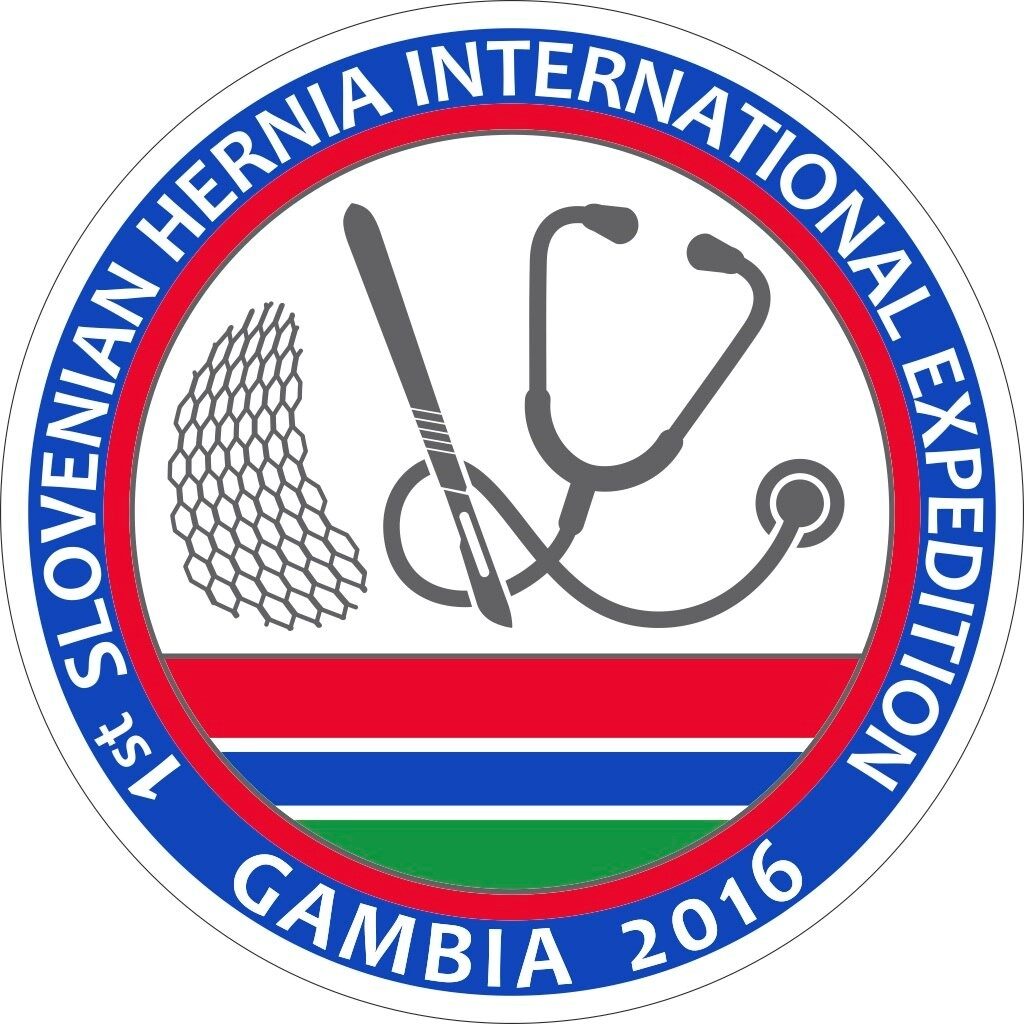
India was our first choice of destination for an expedition in 2016. We put a lot of effort into it, however, due to poor communication from the Indian contacts we started looking for alternatives. We turned to Prof. Andrew Kingsnorth, who suggested Farafenni, The Gambia. It was a complete unknown, this tiny West African country, but with trust that our boss Andrew will not let us down, we started preparations with enthusiasm. First, we needed a team. There are quite a few Slovenian surgeons and other doctors, who are active in charity work in the third world. However, there has not been an entirely Slovenian “HERNIA INTERNATIONAL (HI)” mission up to now. Before taking the challenge to organize this expedition, I took part on missions in Mongolia, India, Ghana, Tanzania and elsewhere and gained a lot of experience and knowledge, which helped me bring together a national team. I brought together experienced doctors on one hand and enthusiastic youth on the other. The team members were Tomaž Benedik (consultant surgeon), his daughter Selena Benedik (medical student), Eva Pogacar (consultant anaesthesiologist), Urška Bricelj (resident of anaesthesiology), Luka Kovac (resident of obstetrics and gynaecology) and Jurij Gorjanc (consultant surgeon and team leader). Additionally, Alex Lupke (resident of anaesthesiology) from Grimma in Germany joined our team. He attended an expedition in Farafenni the previous year and helped us a lot with his previous experience. His practical skills in anaesthesiology and his information about the country, hospital and important details about the surgical team from Gambia were of great help.

Team members – smiling with the lost luggage
The communication through e-mail-exchange, before the mission with the director of the AFPRC hospital (Armed Forces Provisional Ruling Council) Dr. Mamady Cham, PhD was excellent. He gave us the feeling that the team in his hospital was well organized, cooperative and appreciative of our help. The impression was strongly confirmed during and after the mission.
There were many possible ways to fly to Farafenni. We decided for a one-stop combination (Venice-Barcelona-Banjul), all other flights were two or more stop flights. A mistake! It was a low cost flight. Luggage was strictly weighed and any additional luggage had to be paid for. We tried to reserve extra luggage beforehand, but to no avail. Even worse, our extra luggage was lost and arrived at the hospital in Farafenni in the evening of our third operating day.
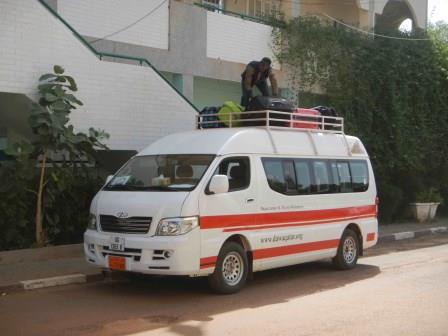
On our arrival to Banjul, we were highly honoured. We were welcomed to the country by Dr. Cham, the hospital director and the Gambian minister of health, the honourable Dr. Omar Sey. The embarrassment about the missing luggage at landing was reduced after Dr. Cham, again showed just how good a host he was. He gave provided materials from the hospital and medicine from the hospital pharmacy for our disposal. Without the help from the hospital, we would be limited just to a few surgeries until the fourth operating day.
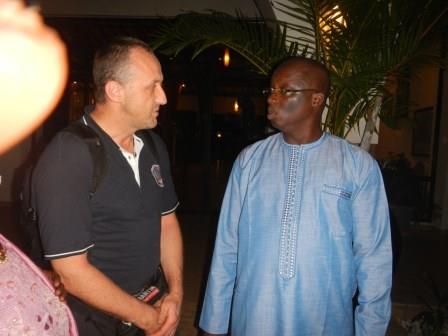
Meeting honorable Omar Sey, Gambian Minister of Health
After spending one night in Banjul, we headed east on the south bank of the River Gambia and crossed it with the ferry just south of Farafenni. The journey in the hospital Taxi-van was pleasant as our Public Relations Officer Mr. Sainey Dibba explained many details about the country. Sainey was of great support during our whole mission.
Our accommodation was Eddy’s hotel, about a kilometre away from the hospital. After checking the operation theatres and the hospital gear, there was a lot of positive energy to start working the next morning. The AFPRC hospital is cleverly designed and strongly built entity. It is a renowned regional hospital with trained personnel. Essential persons for us were surgeon Dr. Lamin Jammeh (a very well educated and practically skilled young consultant), Dr. Francisco from Cuba (a perfectly trained and skilled anaesthesiologist) and Christiana, a skilled Anaesthesiology Nurse and great organizer in the operating theatre. Dr. Jammeh and Dr. Lupke did almost all the triaging and pre-operation preparations. This allowed the rest of the team to concentrate fully on surgery. We tried not to disappoint over a hundred carefully recruited Gambians with many diseases, because we wanted to stay focused on patients with hernias and hydrocoeles. Every day from Monday to Friday, we operated from 8.30 am to 8 pm, sometimes even longer. At the beginning the fast pace was not easy for the hospital staff but we all got used to it quickly (Friday was an exception, we finished early).
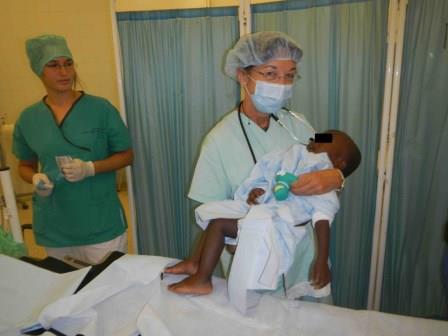
Postoperative transport of the small patients to the ward – personally by Eva and Urška
We performed operations on two tables, separated by screens. There was air-conditioning, so we only felt the 40oC during lunch.
In 5 working days, we performed 63 procedures on 57 patients. There were no perioperative complications. 45 patients (80%) were male, 12 patients (20%) female. 19 patients (33%) were children. 36 patients (63%) had different inguinal hernias. Other hernias/diagnoses were 12 umbilical hernias (21%), 10 hydrocoeles (18%), 5 incisional and/or epigastric hernias (9%). One patient had a cystic scrotal tumour (orchiectomy) and two patients had symptomatic haemorrhoids (Milligan Morgan). Due to the excellent anaesthesiology team, almost 44% of all operations were performed in general anaesthesia, 46% in spinal and 10% in local anaesthesia. According to the statistics from the hospital administration, 82% of the patients were Gambians.
I was proud to lead a professional team: Tomaž, a very experienced consultant mastered even the most difficult hernia cases. His daughter Selena, a medical student, was assisting as a “real doctor” to her father up to 12 hours daily. Luka performed his first hernia repairs and showed talent for operations. Eva took a great deal of responsibility on her shoulders as the leading anaesthesiology consultant of the team, performing anaesthesias even in 1 year old babies. Her cooperation with Urška, who will make her consultant exam in 2017, was of great value for our success. So was Alex from Germany, as mentioned above.
We also provided education to the local surgeons and operating theatre staff on new techniques. Dr. Jammeh is now more skilled in Lichtenstein repair and Rives-Stoppa sublay procedure. However, there was also a lot that we learned from the Gambian team. Many details of the surgical procedures can be simplified without a risk to the patient and are less challenging for the operating team. Medicine in our home countries is definitely very sophisticated, which is good and necessary, but perhaps it is also too complicated in some ways?
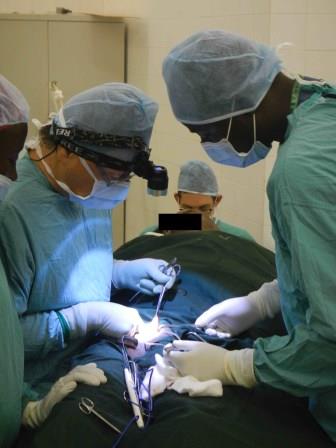
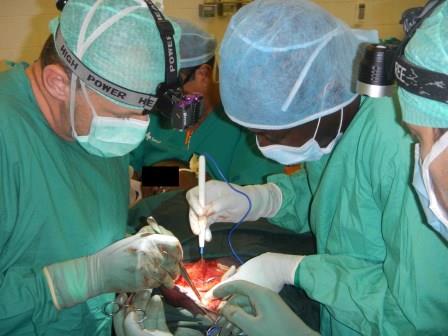
Education in the Op. theatre-dr. Jammeh performing Lichtenstein and Rives-Stoppa sublay repair
All the good work in Farafenni could not been done without good cooperation between the Hernia International team and local professionals at the AFPRC hospital. Therefore, on the last day of the mission in Farafenni, we did not have the impression that we just came there to operate on patients for one week, but that we cooperated with the local professionals in order to do something for the Gambian people. The centre of our interest was the well-being of the patients.
In the Bible, there is a saying: “If someone works well, he should also eat well.” (2 Thes., 3, 10). The excellent cook Jenaba Secka was taking care of our meals throughout the week. She provided us with local delicacies from grilled chicken to fresh fish from the River Gambia, not to mention the local fruit and vegetables. Without her food, we would not be able to stay in the hospital for 12 or more hours daily.
Who could forget our experience? Not just the good medicine of that week, but also new friendships, friendly Gambian people, social evenings in Eddy`s hotel garden with cicada songs and falling coconuts? What remains in the long term is our gratitude towards our Gambian hosts and our plans for future expeditions.
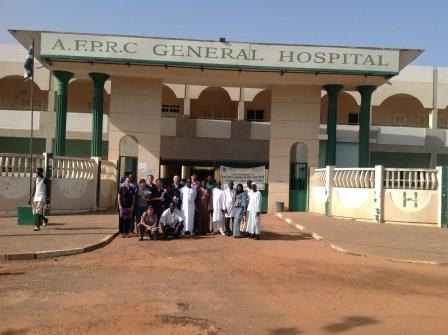
Jurij Gorjanc

